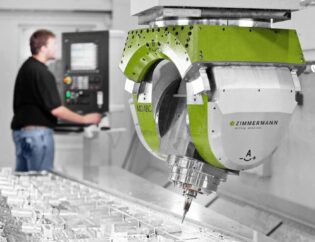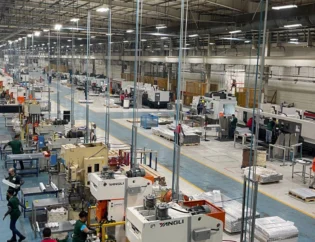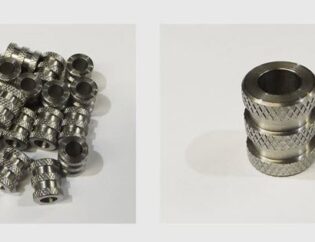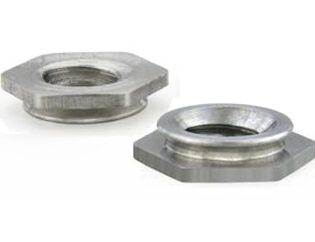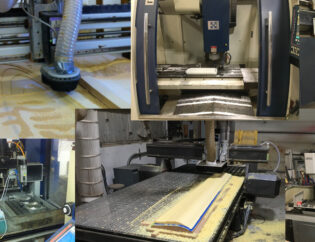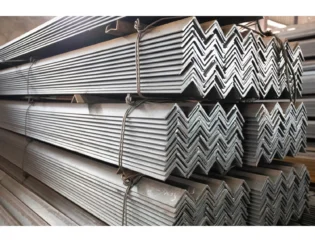Rapid prototyping additive manufacturing is revolutionizing the way products are designed and developed. This innovative approach allows for the quick creation of prototypes, enabling designers and engineers to test ideas and iterate rapidly. As industries increasingly adopt these technologies, understanding their principles and applications becomes essential for staying competitive.
In this guide, readers will explore the fundamentals of additive manufacturing, including various techniques and materials used in rapid prototyping. We will delve into the benefits and challenges associated with these methods, providing insights into best practices for implementation.
Additionally, the guide will cover real-world applications across different sectors, showcasing how companies leverage rapid prototyping to enhance product development cycles. By the end, readers will be equipped with the knowledge to effectively utilize additive manufacturing in their own projects, driving innovation and efficiency.
The Comprehensive Guide to Rapid Prototyping and Additive Manufacturing
Rapid prototyping involves creating physical parts to verify designs and test a product’s capabilities in an experimental approach. With additive manufacturing, rapid prototyping speeds up product development and accelerates time to market. The prototype is received quickly and cost-efficiently, helping validate designs and iterate as needed before production begins. Selecting the appropriate rapid prototyping technology is crucial for the success of prototypes in engineering product development.
Understanding Rapid Prototyping
Rapid prototyping (RP) is a set of techniques used to quickly fabricate a scale model of a physical part or assembly using 3D computer-aided design (CAD) data. It allows designers and engineers to visualize and test their concepts before full-scale production. This process is essential in various industries, including automotive, aerospace, and consumer goods, as it reduces development time and costs.
Technical Features of Rapid Prototyping
The technical features of rapid prototyping can vary significantly based on the technology used. Below is a comparison of some key technical features across different rapid prototyping methods:
| Feature | SLA | SLS | FDM | DMLS | Binder Jetting |
|---|---|---|---|---|---|
| Material Type | Photopolymer resin | Plastic, metal powders | Thermoplastics | Metal powders | Metal, plastic powders |
| Build Speed | Moderate | High | High | Moderate | High |
| Surface Finish | Excellent | Good | Moderate | Excellent | Good |
| Complexity | High | Very High | Moderate | Very High | Moderate |
| Post-Processing Needs | Moderate | High | Low | High | Moderate |
| Cost | Moderate | High | Low | Very High | Moderate |
Types of Rapid Prototyping Technologies
Different rapid prototyping technologies offer unique advantages and are suited for various applications. Here’s a comparison of some common types:
| Technology | Description | Advantages | Disadvantages |
|---|---|---|---|
| Stereolithography (SLA) | Uses UV light to cure liquid resin layer by layer. | High accuracy and smooth surface finish. | Limited material options and requires support structures. |
| Selective Laser Sintering (SLS) | Uses a laser to sinter powdered material into solid parts. | Good for complex geometries and no support needed. | Rough surface finish and limited material choices. |
| Fused Deposition Modeling (FDM) | Extrudes thermoplastic filament to build parts layer by layer. | Cost-effective and widely available. | Lower resolution and strength compared to other methods. |
| Direct Metal Laser Sintering (DMLS) | Melts metal powder to create dense parts. | Produces high-strength parts suitable for functional use. | High cost and slower build times. |
| Binder Jetting | Sprays a binding agent onto powder layers to create parts. | Fast and cost-effective for large parts. | Lower strength and surface finish compared to SLS. |
Advantages of Rapid Prototyping
Rapid prototyping offers numerous benefits, including:
- Reduced Development Time: Rapid prototyping significantly shortens the time required to develop new products, allowing for quicker iterations and faster time-to-market.
- Cost Efficiency: By minimizing material waste and reducing the need for expensive tooling, rapid prototyping can lower overall production costs.
- Enhanced Design Flexibility: Designers can easily modify prototypes based on feedback, leading to improved product designs.
- Improved User Feedback: Physical prototypes allow for better user testing and feedback, ensuring that the final product meets customer needs.
Applications of Rapid Prototyping
Rapid prototyping is utilized across various industries for different applications:
– Concept Models: Initial representations of a product to visualize design.
– Functional Prototypes: Working models to test specific features and functionalities.
– Geometric Prototypes: Models focusing on dimensions and form rather than functionality.
– Technical Prototypes: Near-final versions used for testing before mass production.
Conclusion
Rapid prototyping is a transformative approach in product development, enabling faster, cost-effective, and more flexible design processes. By leveraging various additive manufacturing technologies, companies can enhance their innovation capabilities and respond swiftly to market demands. As industries continue to evolve, the importance of rapid prototyping will only grow, making it an essential tool for engineers and designers alike.
FAQs
1. What is the main purpose of rapid prototyping?
Rapid prototyping aims to quickly create physical models of products to test designs, validate concepts, and gather user feedback before full-scale production.
2. How does rapid prototyping differ from traditional manufacturing?
Unlike traditional manufacturing, which often requires extensive tooling and setup, rapid prototyping allows for quick iterations and modifications, reducing time and costs.
3. What materials are commonly used in rapid prototyping?
Common materials include plastics (like ABS and PLA), resins, and metal powders, depending on the specific prototyping technology used.
4. Can rapid prototyping be used for functional parts?
Yes, many rapid prototyping methods, such as DMLS and SLS, can produce functional parts suitable for testing and even end-use applications.
5. How can I choose the right rapid prototyping technology?
Selecting the appropriate technology depends on factors like the desired material, complexity of the part, required accuracy, and budget constraints.



